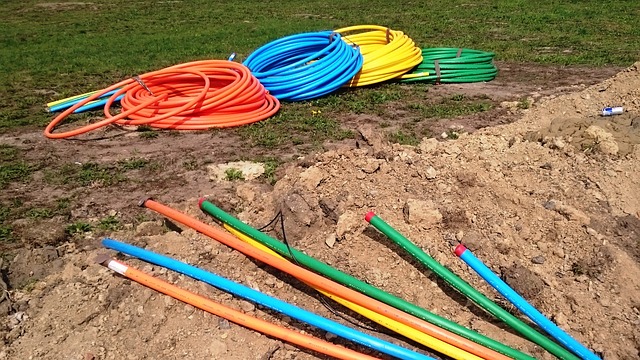
Have you heard of direct-burial cable? Like all types of cable, it features multiple conductors. Wires consist of a single conductor, whereas cables consist of bundles of conductors. Direct-burial cable, however, features a rugged design that allows it to withstand the harsh environment of the soil.
Overview of Direct-Burial Cable
Direct-burial cable is a type of durable, weather-resistant cable that’s designed for use underground. As the name suggests, it can be buried under the ground.
Other types of cable can be buried under the ground as well — but only when placed inside a separate protective sheath. Direct-burial cable doesn’t require a separate sheath. You can run it underground without using a sheath. Direct-burial cable is designed with stringent standards to protect against signal degradation from the heat and moisture of the soil.
Benefits of direct-burial cable include the following:
- Reliable and long-lasting
- Doesn’t require a separate sheath
- Easier to install than traditional cable
- Rugged design
- Waterproof
The Layers of Direct-Burial Cable
There are different types of direct-burial cables, but most of them feature several layers. The outermost layer is the outer sheath. It’s arguably the most important layer as it will remain in direct contact with the soil.
Next is the filler layer. The filler layer consists of a nonconductive “filler” material that helps to protect the conductors from damage.
After the filler layer is the inner sheath. Most types of direct-burial cables have an outer sheath, followed by a filler layer, and then an inner sheath. All three of these layers wrap around the conductors, which are found near the center of direct-burial cables.
Common Applications for Direct-Burial Cable
Direct-burial cable is commonly used in telecommunications applications. Coaxial and fiber optic cables, for example, are available as direct-burial. They don’t require a separate sheath when installed under the ground. With the direct-burial specification, coaxial and fiber optic cables can be run underground by themselves and without a separate sheath.
There are also direct-burial power cables. Some neighborhoods and commercial areas use overhead power cables. In other places, though, direct-burial power cables are used. Direct-burial cables carry electricity to homes and buildings. And like all types of direct-burial cables, they are installed underground without requiring a separate sheath.
In Conclusion
Some types of cables are designed for use underground. Known as direct-burial, they can withstand the harsh environment of the soil. Direct-burial cables feature multiple protective layers that shied their inner conductors.

